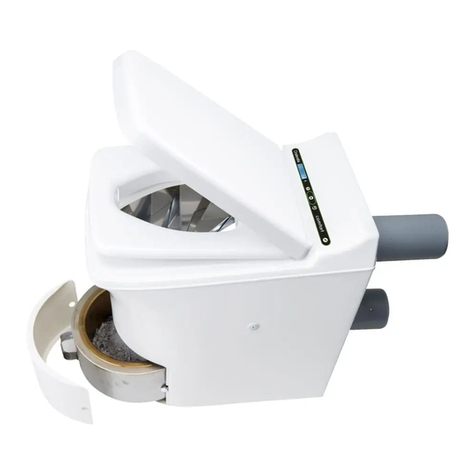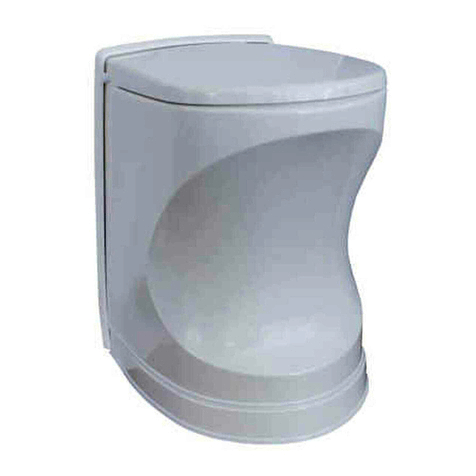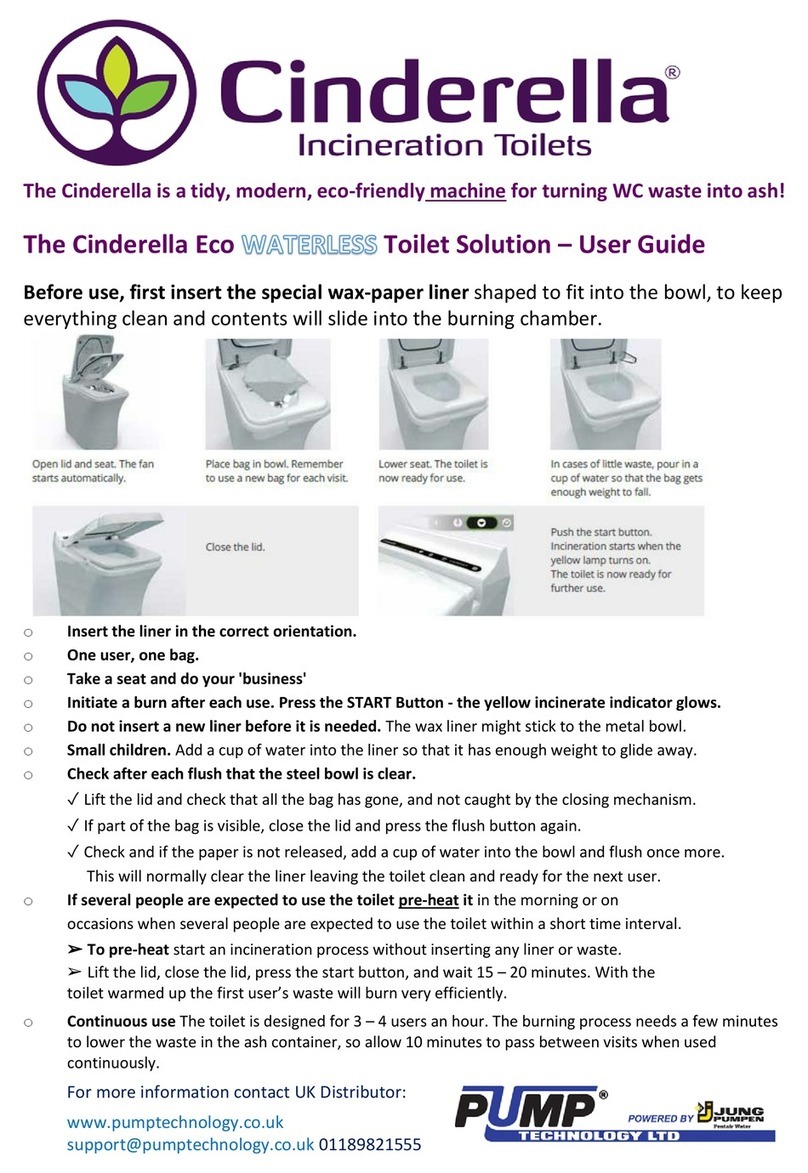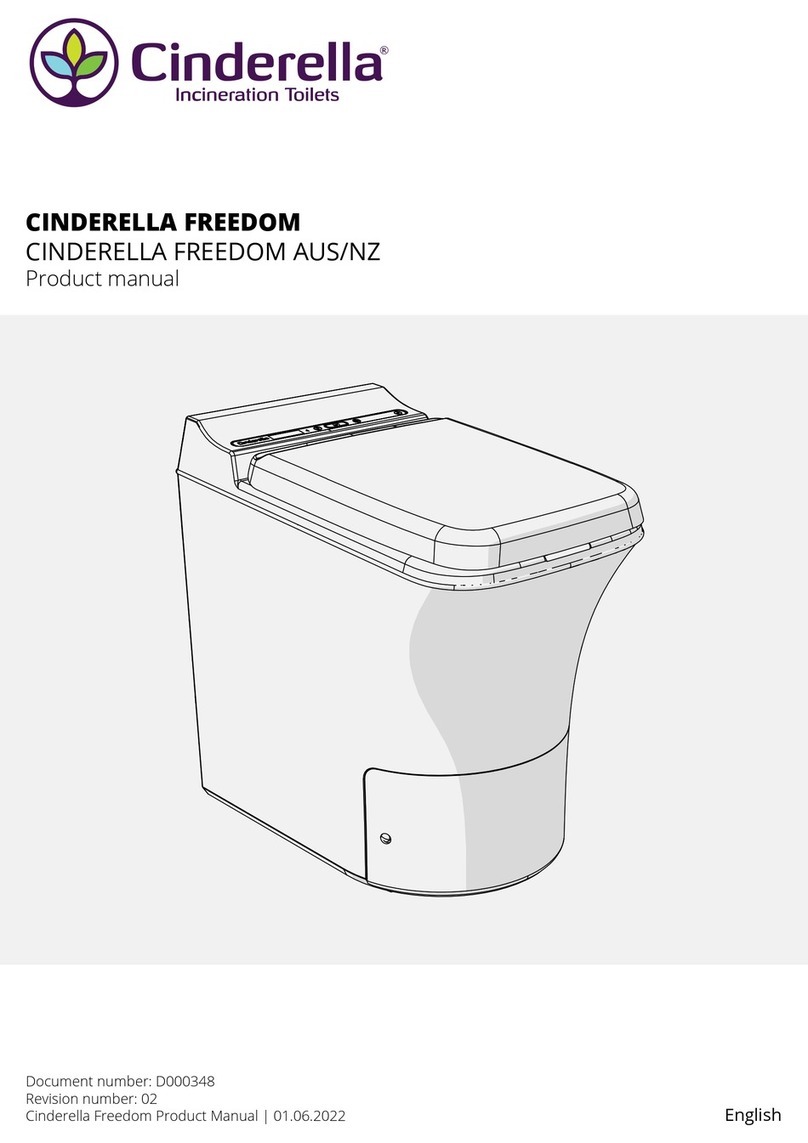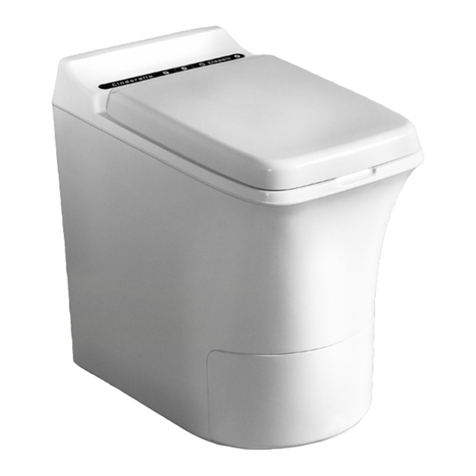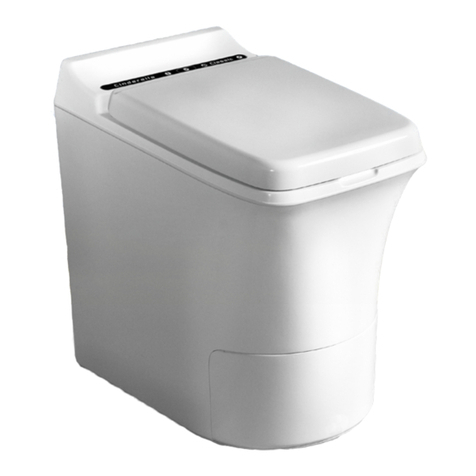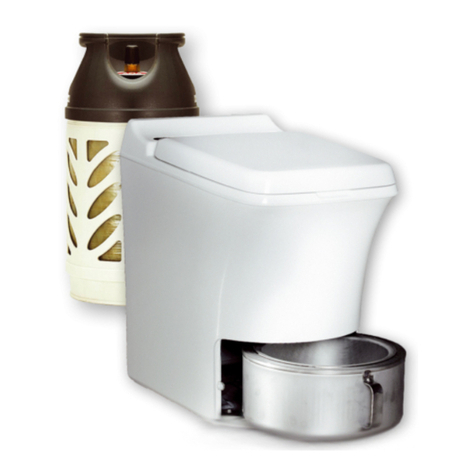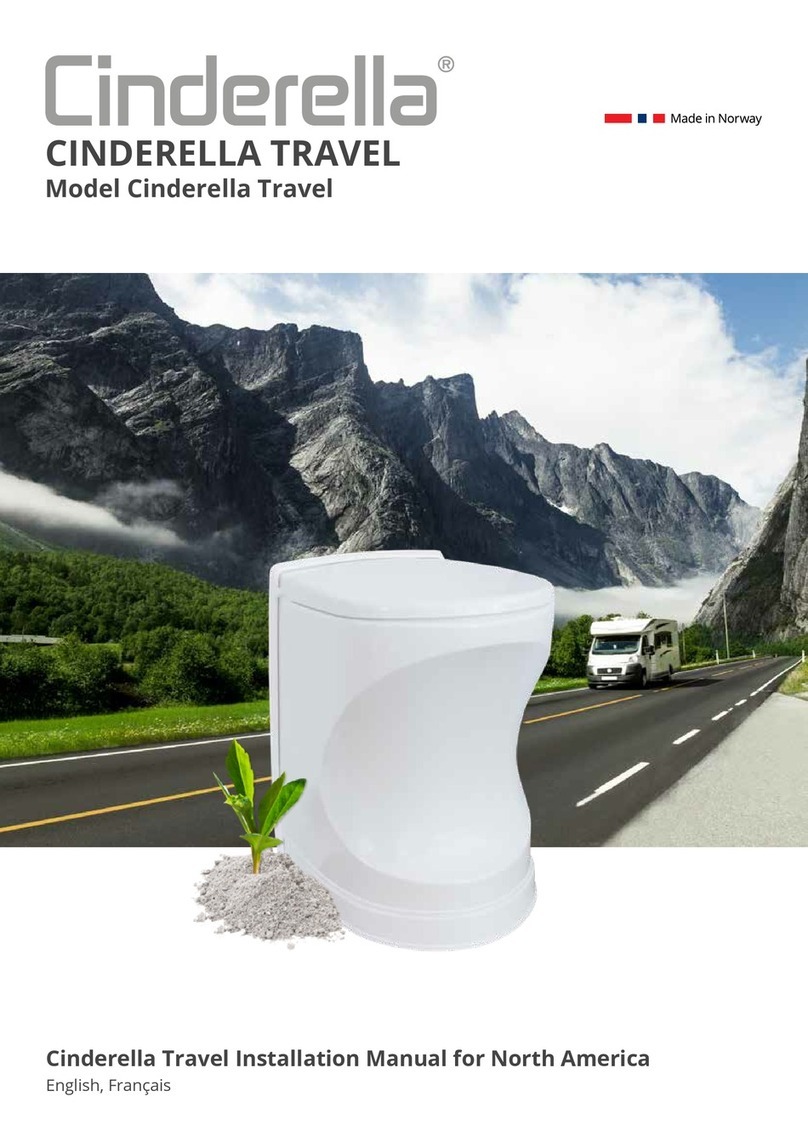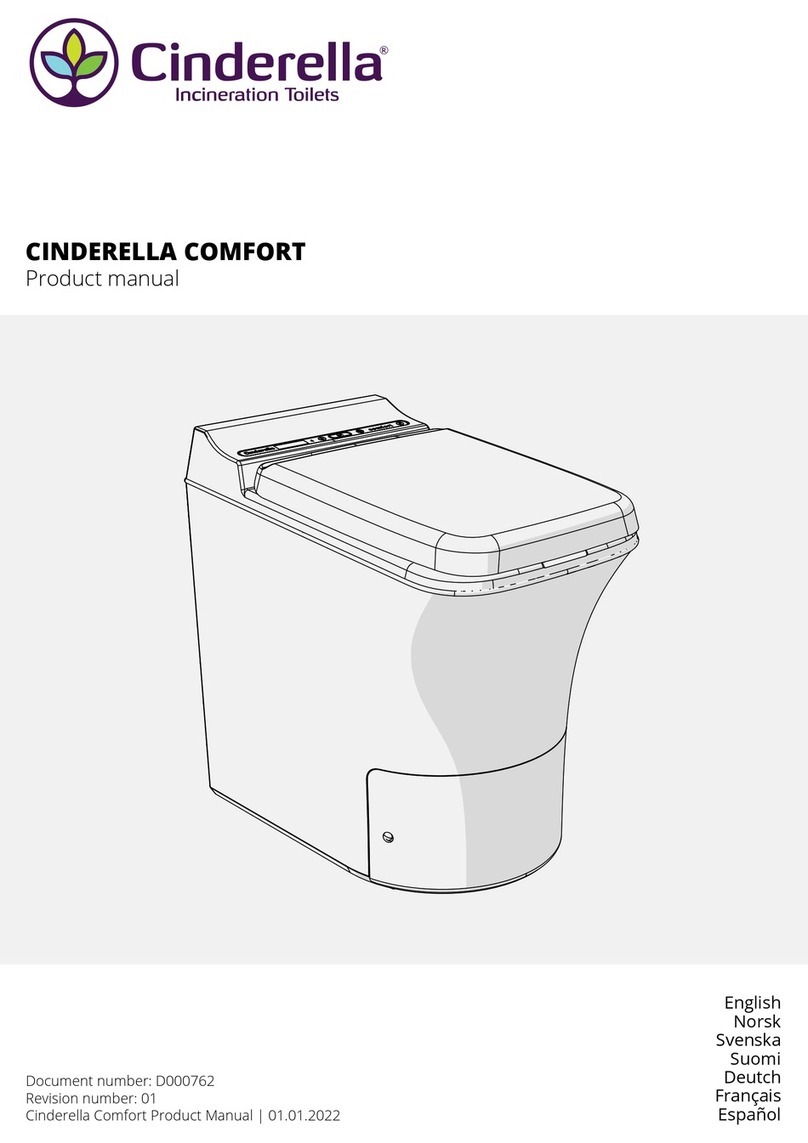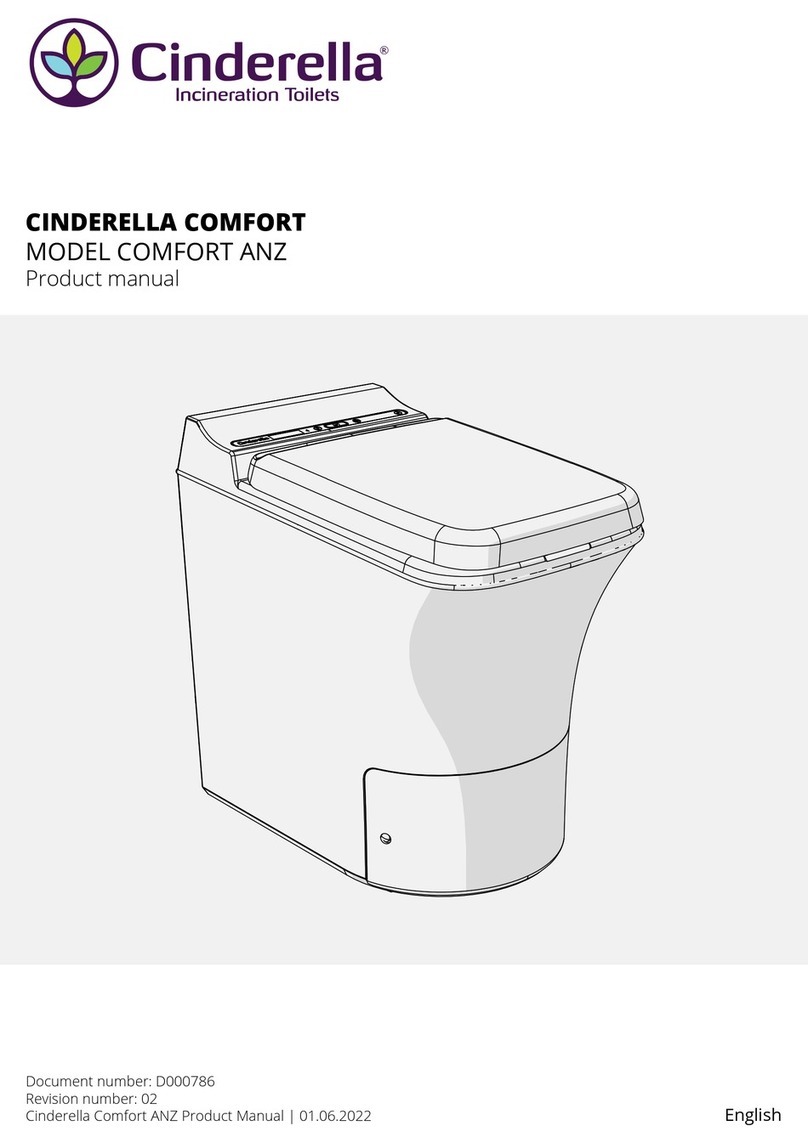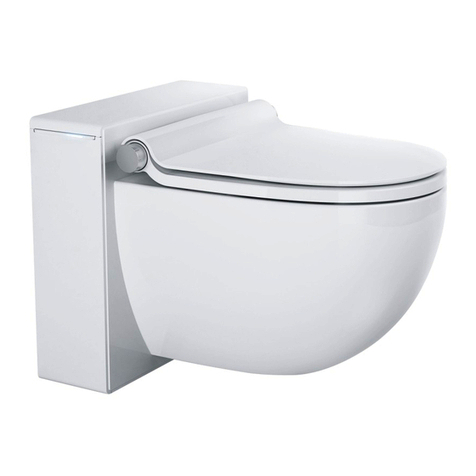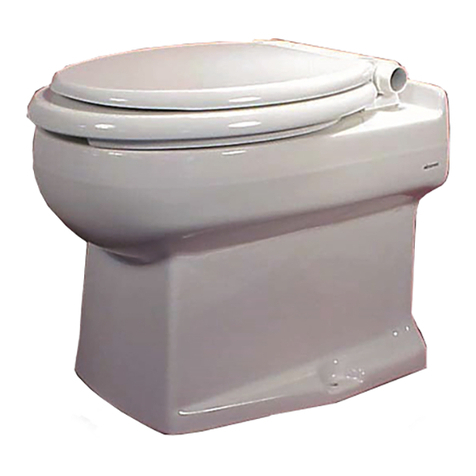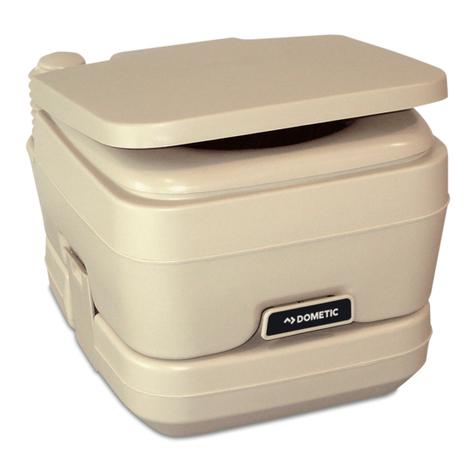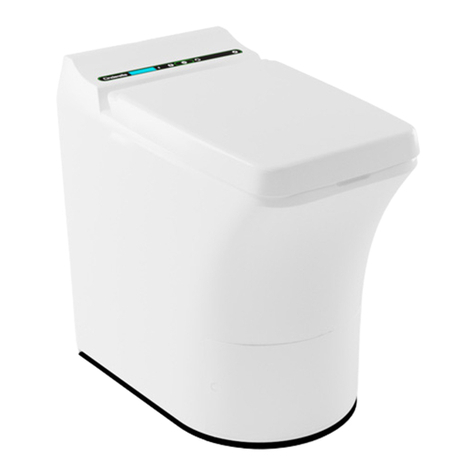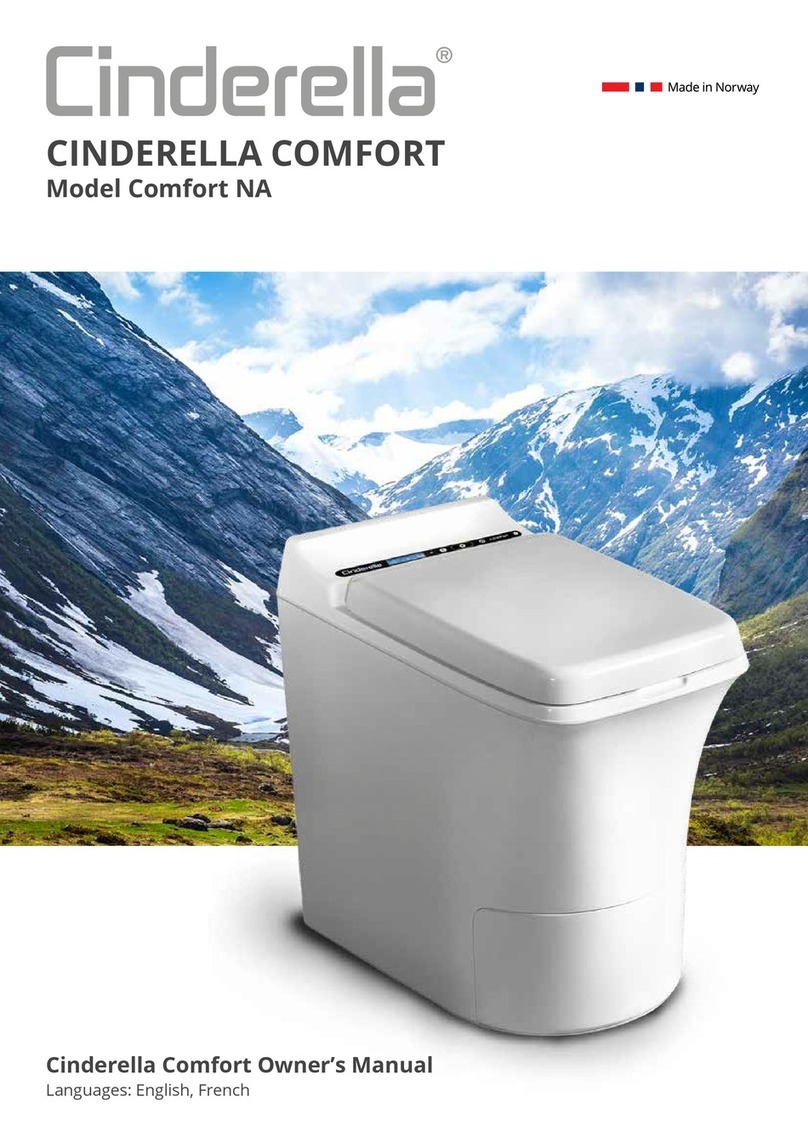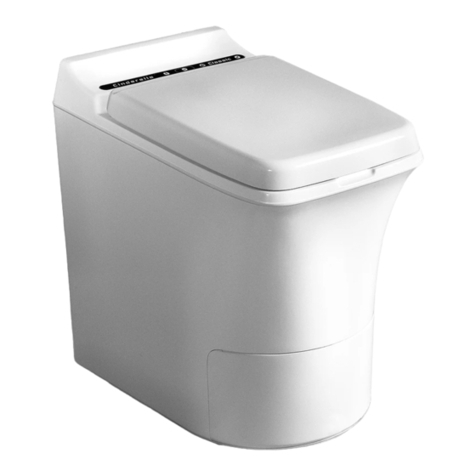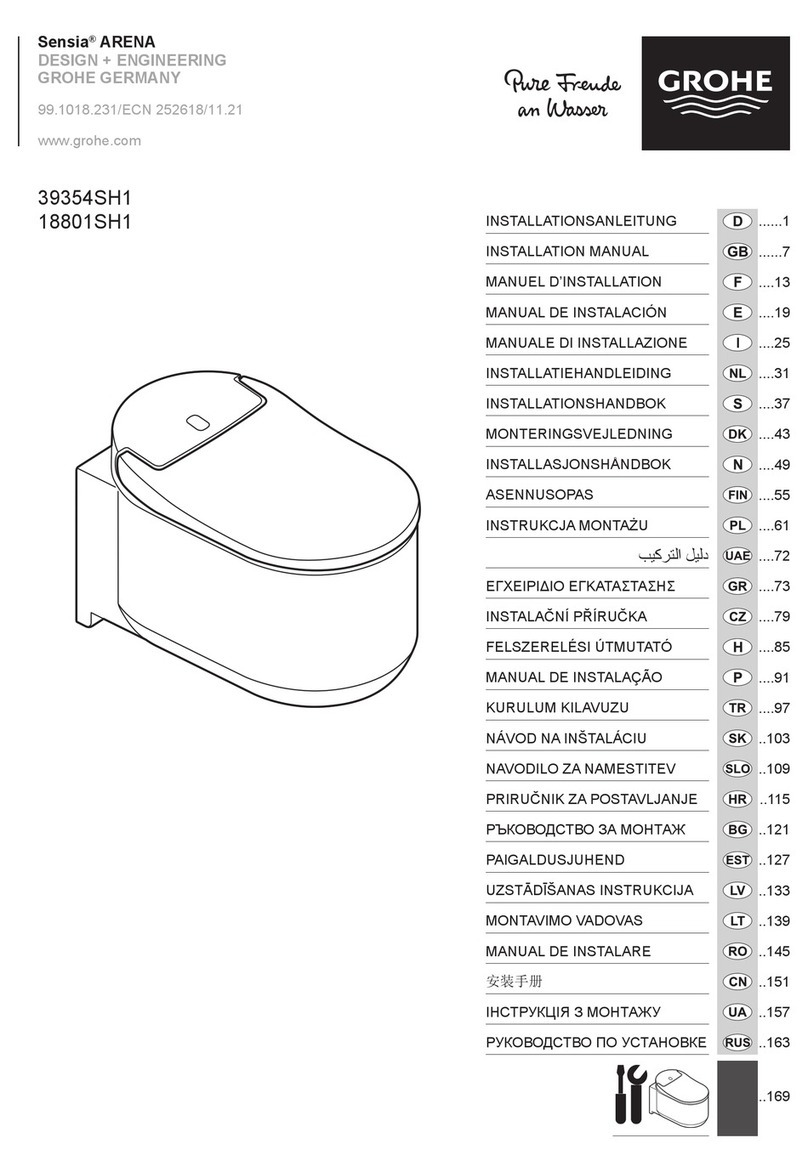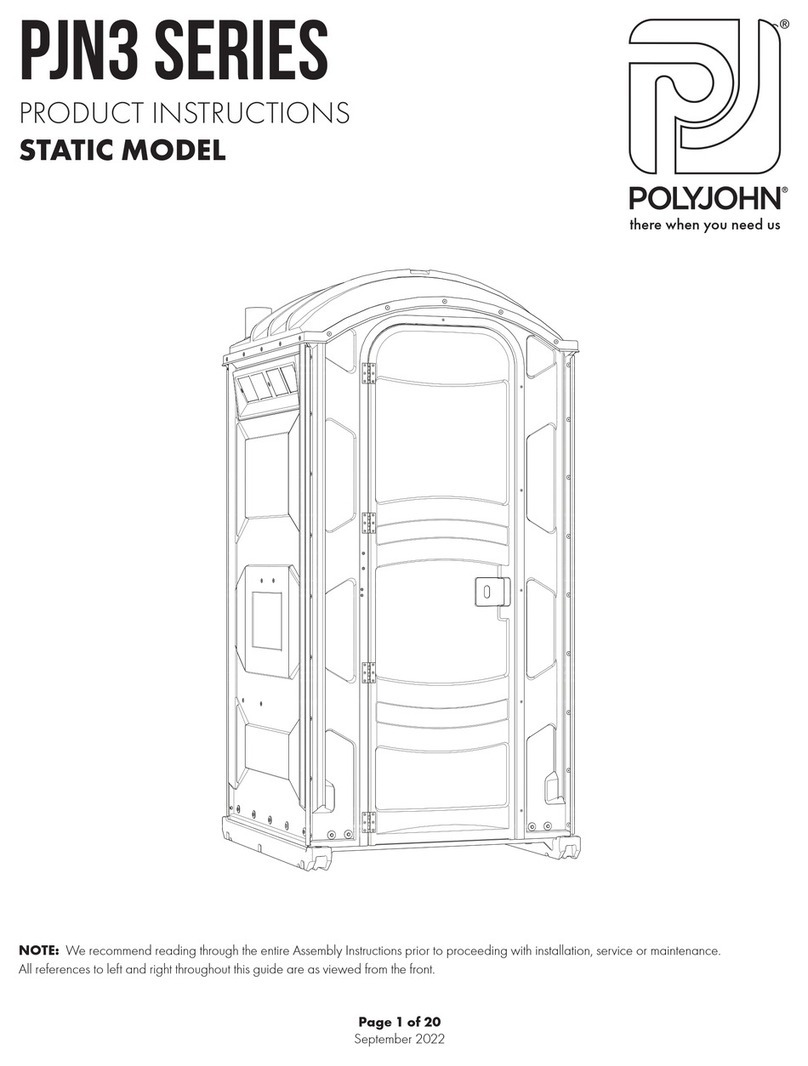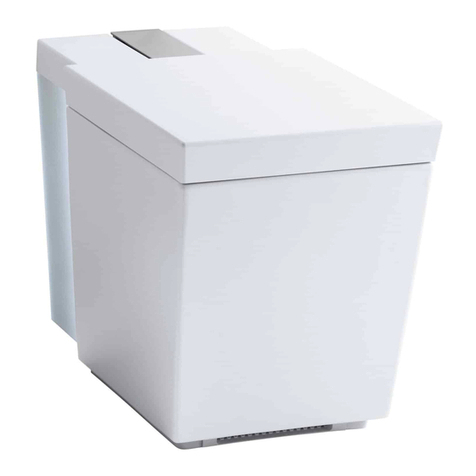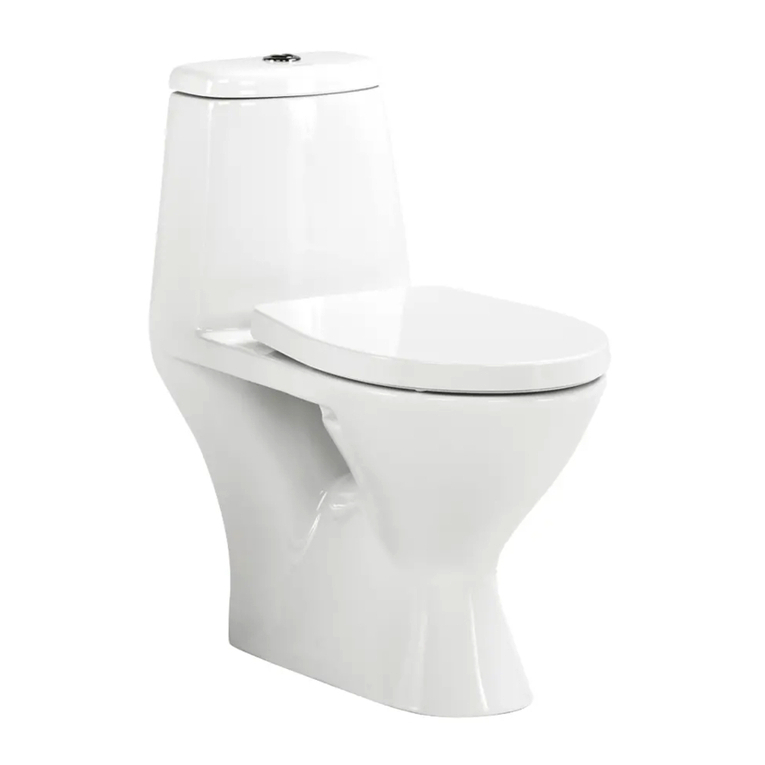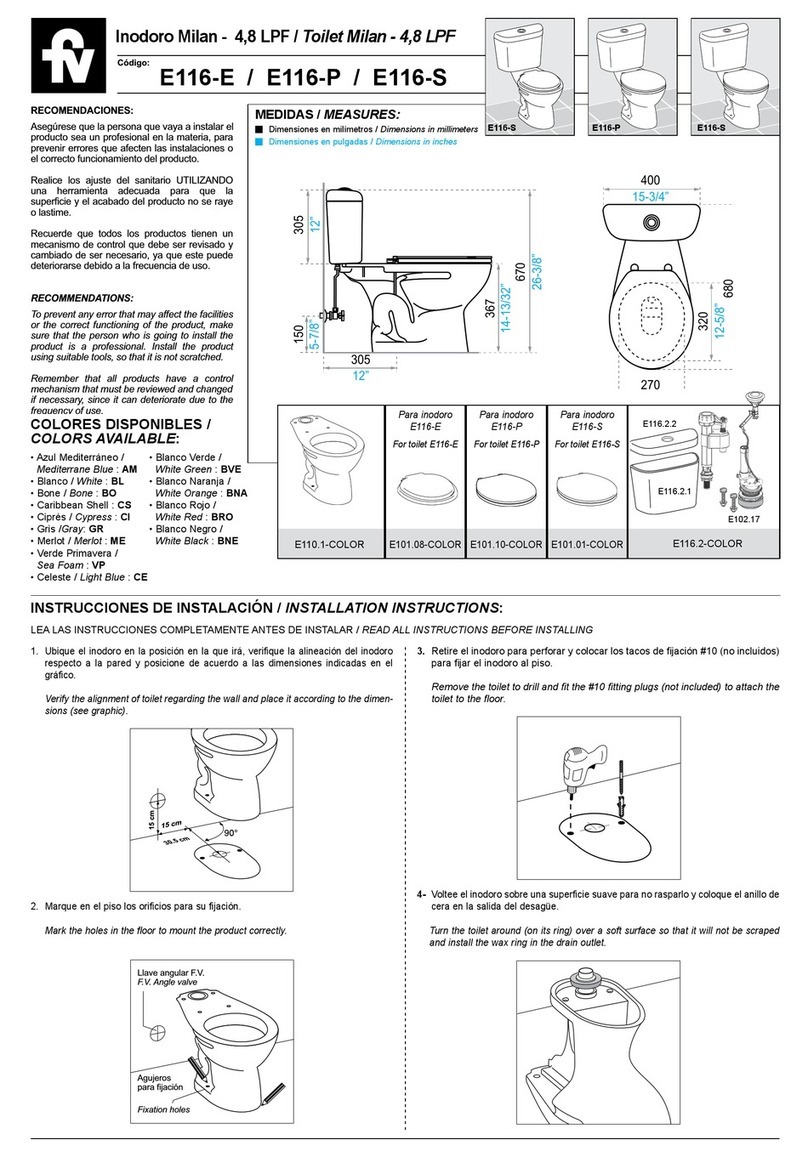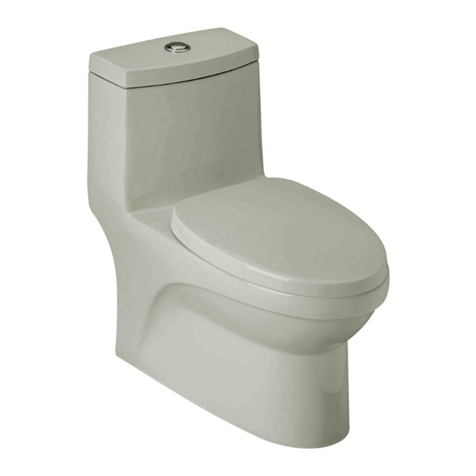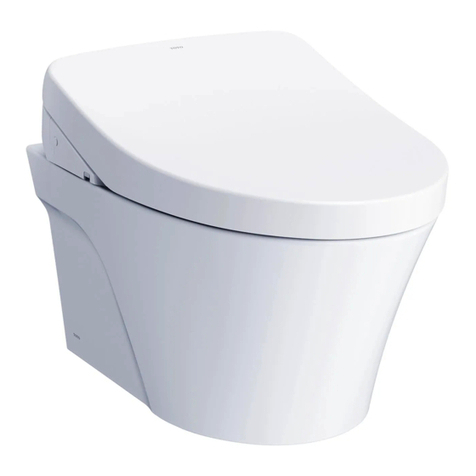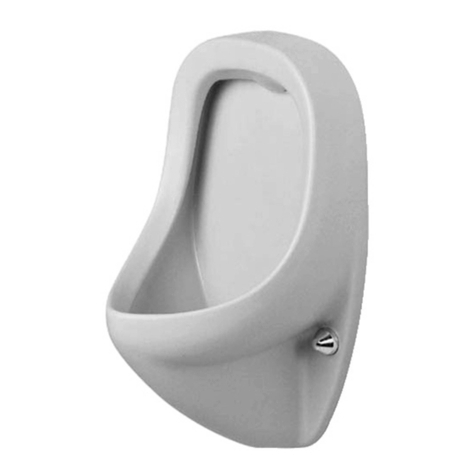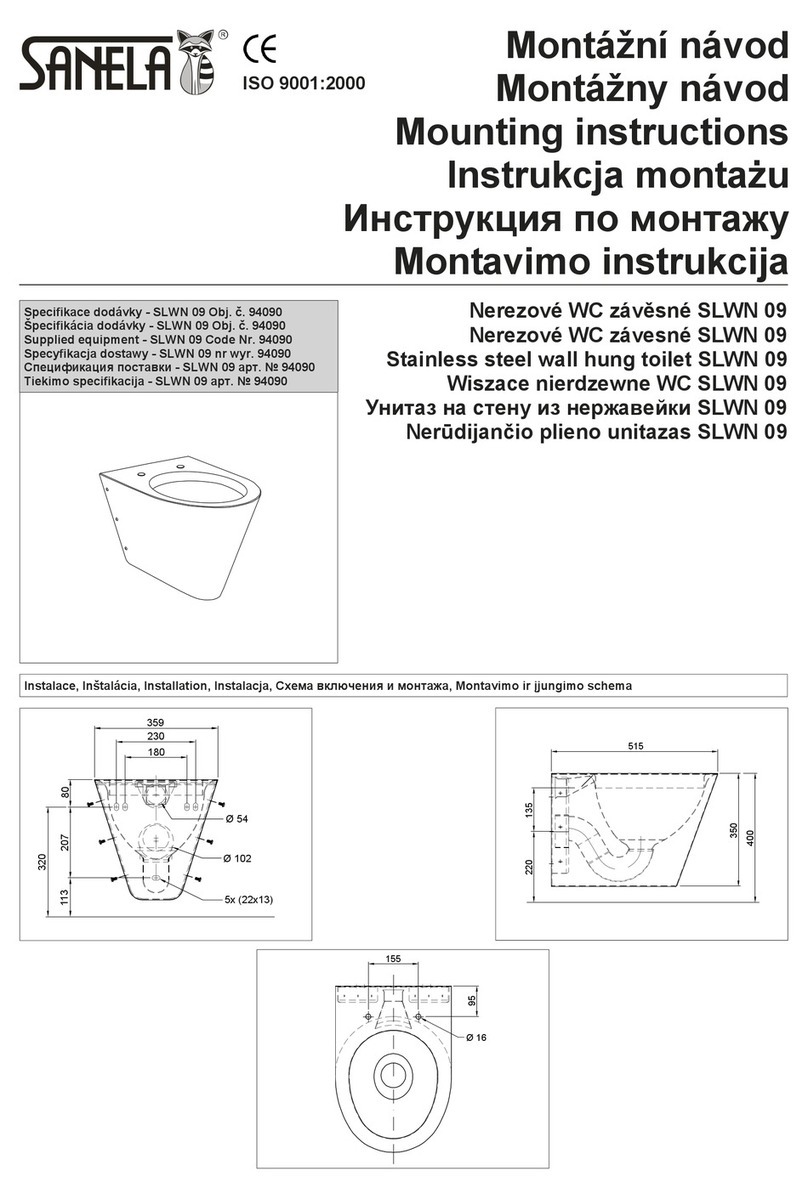
FINAL INSTALLATION
Install the necessary ttings, using a few drops of washing detergent to assemble parts, if required. If the pipe
is installed along a wall, wall-mounting brackets may be required. Always use the enclosed T-bend. The plug on
the underside of the T-bend must always point down, since there is a hole in the lowermost part of the T-bend
where condensation water can drain. For this reason, the T-pipe should not be enclosed, since it should be
possible to inspect the hole and verify that it is not blocked by leaves or similar objects. In cases where it is
necessary to cover up T-bends, an inspection hatch must be installed.
In internally installed pipe systems, a bowl may be placed below the T-bend to collect any condensation water.
Push the enclosed chimney top onto the pipe as far as it will go. NOTE! Do not cover the opening of the
ventilation pipe with insect netting. Use suitable screws to attach Cinderella to the foundations.
Attaching Cinderella to the oor:
1. Remove the ash container.
2. Drill holes in the indicated attachment locations.
3. Use suitable wood screws or fully penetrating screws and nuts to
attach the toilet to the foundations.
POWER
Connect the loose ends of the cable to a 12V battery. (Note: Brown+ and Blue-).
If it is necessary to extend the cable, it is essential to use a cable with the correct
cross-section, in order to prevent shutdown due to an excessive high voltage drop.
• For extension up to 1.9m, use 0.75mm2
• For extension up to 3.9m, use 1.5mm2
BOTTLE STORAGE
• As a basic rule, we recommend that gas bottles
should be stored outside the home (on a veranda,
balcony or terrace).
• Cabinets mounted to walls made of flammable
material, have to be fireproofed (EI 60) with good
ventilation to open air at the base level of the
cabinet.
• The area around the gas cabinet must be tidy and
free of flammable materials.
• The distance from the bottle cabinet to drains,
tanks, openings to basement, etc., has to be at
least 4 meters. There ought to be a safety distance
of 5 meters to potential ignition sources.
• In case of indoor bottle storage in a cabinet/bench,
the cabinet/bench must have good ventilation, e.g.
with a vent in the base.
• Regardless, when stored indoors, the bottle must
be in a place with as much air as possible.
PERMITS AND CONTROLS
• Household gas appliances may require application
for a permit pursuant to zoning and building
legislation. Check with your local building
authorities.
• The building of a gas grid must only be performed
by people with documented qualifications. The
system must be leak tested (compression test).
SAFETY IN GENERAL
• Use soapy water to check for leaky connections.
• Close the gas supply for prolonged absences. Bring
the bottle to a safe place in case of fire.
• Hoses should be changed regularly. The longest
legal hose length is 1.5 meters.
• Propane gas is heavier than air, and will seek
lower areas in case of leakage.
• As with all other propane based products, we
recommend the installation of an approved gas
alarm / gas indicator.
GAS
Connect the propane gas hose, with the included regulator, to a standard household bottle. If the regulator has
to be changed or if it will be connected to a utility system, the regulator/utility must deliver 30mBar.
Storing propane gas in basements or attics is not allowed.
It is not allowed to store ammable gas in furnace rooms, etc.
NOTICE!
13
ENGLISH




















